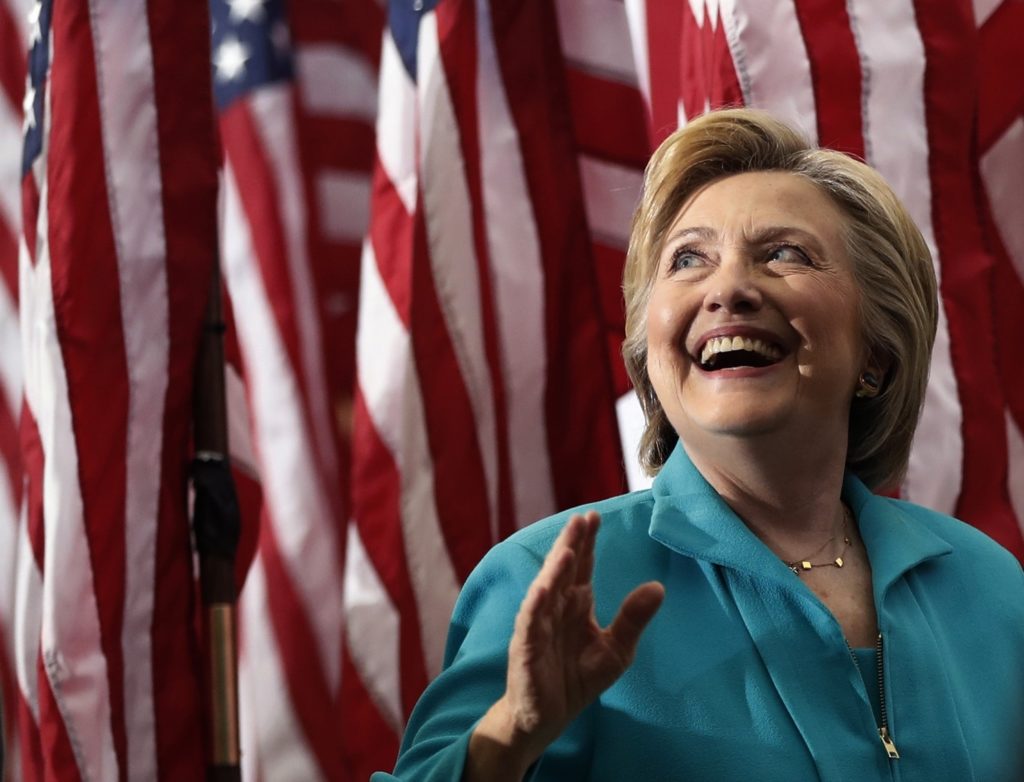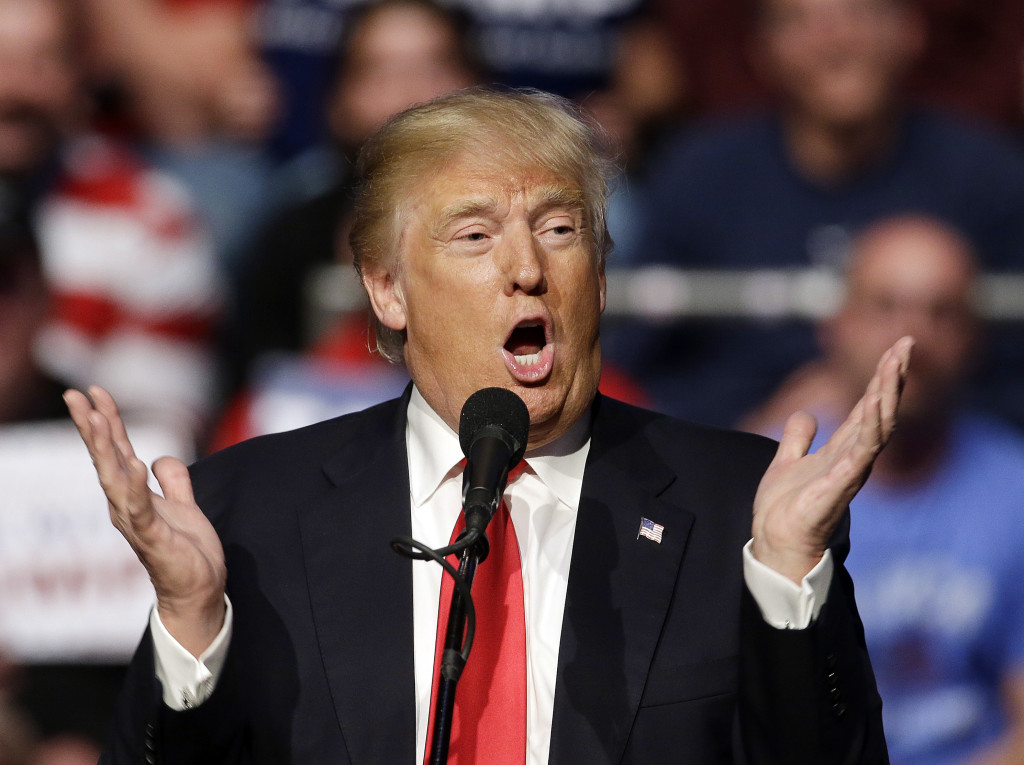Donald Trump campaign plans $140 million ad buy

Donald Trump‘s campaign is planning for what it says will amount to $140 million worth of advertising from now until Election Day. The total, if executed, would include $100 million in television airtime and $40 million in digital ads, according to senior communications adviser Jason Miller. The plan represents a new approach for the billionaire businessman, who has repeatedly bragged in recent weeks about how much less he’s spent than Democratic rival Hillary Clinton and seemed to rely heavily on free media coverage of his large rallies. Through this week, the Trump campaign has put only about $22 million into TV and radio ads for the general election, according to Kantar Media’s political advertising tracker. Clinton has spent more than five times as much on those kinds of ads, $124 million so far. Trump’s new ad buy will include 13 states, from key battlegrounds such as Florida, North Carolina, Ohio and Pennsylvania, to new targets of Maine, New Mexico and Wisconsin, Miller said. About $40 million of the ads will play on national TV, he said. That averages to about $16.7 million per week in TV ads; Miller said the first $15 million ad buy was made Friday, although media buyers and services such as Kantar Media didn’t immediately see evidence of that. Clinton’s ad reservations going forward total about $11 million per week, but her campaign can add to those buys at any time. Trump’s advertising plan costs more than his campaign has in the bank, meaning he needs to dip into his own pockets or continue raising major money. As of Sept. 1, the campaign had about $50 million in cash, though in a news release earlier this month, the campaign said it had $97 million in cash when including his joint accounts with Republican Party allies. Trump has continued to experience strong fundraising online this month, campaign aides said. Miller said upcoming national television ads would focus on Trump’s key campaign themes, such as the economy and law and order. The local ads, however, are expected to focus on ways Trump’s policies might benefit local communities and families, Miller said. Republished with permission of the Associated Press.
What’s on Hillary Clinton’s to-do list before Election Day?

Hillary Clinton will celebrate Labor Day with an edge over rival Donald Trump in any number of the most competitive states, even as she struggles with the challenge of sealing the deal with large groups of voters who consider her dishonest and untrustworthy. Clinton’s experience as secretary of state and her handle on domestic policy make her the favorite in three presidential debates beginning later this month. She has appeared in more than 30 as a presidential candidate in 2008 and 2016. But she still has work to do. A look at Clinton’s Labor Day to Election Day to-do list: DOMINATE THE DEBATES Millions of voters will watch the debates, which offer her an opportunity and a challenge. She needs to prepare for a candidate who’s the most unpredictable nominee in decades. She also needs to prevent Trump from using the televised forums to present himself as a plausible commander in chief, and from turning them into referendums on President Barack Obama’s two terms and Clinton’s decades in politics. Clinton acknowledges that the debates could be pivotal. She told donors last weekend, “Somebody said to me, ‘Well, remember, there’ll be a lot of people watching.’ One hundred million people watching. And 60 million will be paying attention to the campaign for the first time.” CHART A PATH TO 270 Clinton has an edge in most of the highly contested states, the roughly dozen or so where the election will be decided. Her campaign is trying to keep open as many paths as possible through those states to reach the decisive 270 electoral votes needed to win. She enters the fall with a decided advantage, both in terms of history and in this year’s campaign. If Clinton can hold onto the set of states that every Democratic presidential nominee has won since 2000, she starts with 242 electoral votes. Beyond those states, preference polls show her ahead in Virginia and Colorado, and competing in close contests in North Carolina, Florida and Ohio. Applying pressure on Trump, Clinton is advertising in GOP-leaning Arizona and in an Omaha, Nebraska, congressional district. If Clinton can keep open as many routes to victory, she will make it difficult for Trump to chart a way to 270. That will make it hard for him to convince fellow Republicans who are worried about maintaining their congressional majorities that he can win. EXPECT THE UNEXPECTED Clinton’s campaign is bracing itself for some type of ‘October surprise” — an unexpected event that requires the nominee to adjust in the pressure-cooker of the campaign’s final days. Clinton must be able to deftly deal with such a development, and there are plenty of contenders on the horizon. The State Department is expected to release some of the 15,000 emails from Clinton’s time there that have yet to be made publicly available. WikiLeaks has threatened to release more damaging information before the end of the election. She’ll need to make sure any new revelations don’t further damage the public’s view of Clinton, which isn’t particularly strong for a candidate seen as ahead on Labor Day. TURNOUT, TURNOUT, TURNOUT Clinton’s campaign needs to maximize voter turnout among members of the “Obama coalition” — the legions of black, Latino, unmarried women and young voters who powered him to two decisive victories. Trump has sought in recent days to turn around his dismal standing among minorities. But the negative tone of the campaign could dampen turnout and make Clinton’s task more difficult. Clinton also aims to make the most of early voting in a number of critical states, replicating a strategy that worked well for Obama. She will have plenty of help: Obama and Vice President Joe Biden are hitting the road on her behalf and she can also rely on her husband, former President Bill Clinton. TRUSTWORTHINESS Questions about Clinton’s honesty and trustworthiness have dogged her throughout the campaign and she can ill afford to have more voters view her in a negative way. Her saving grace during the campaign has been Trump’s high negative ratings, untrustworthiness and penchant for saying provocative things that have turned off many voters. But more revelations about her private email server or the Clinton Foundation could reinforce the perception that she’s not trustworthy. On Friday, the FBI released notes from its investigation of her email use as secretary of state. It’s the kind of day Clinton needs to avoid. Even if she wins in November, this is a problem could haunt Clinton in the White House. That’s why she needs to start chipping away at her trust deficit now, so that if elected, she will have some public goodwill as she tries to lead the nation and work with Congress. Clinton could find it difficult to enact her agenda if questions about her honesty linger as president. Republished with permission of the Associated Press.
Democratic advertising blitz awaits Donald Trump

Long before Donald Trump swatted away his Republican presidential rivals, his likely Democratic opponent and her allies began laying traps for him. Priorities USA, the lead super PAC backing Hillary Clinton, has already reserved $91 million in television advertising that will start next month and continue through Election Day. In addition, Clinton’s campaign and Priorities USA have both debuted online videos that cast Trump in a negative light — a preview of what voters will see on TV over the next six months. So far, Priorities USA is the only group on either side that has rolled out such an ambitious advertising plan geared toward the general election. The group’s leaders say they’re trying to avoid what they see as the core mistake made by Trump’s Republican rivals — not pushing hard enough against him until it was too late. “There’s a reason that we have a head start,” said Justin Barasky, a Priorities USA spokesman, “and it’s that we’ve taken Donald Trump seriously all along, unlike the Republicans.” The group’s ad strategy will test what has been a hallmark of Trump’s GOP primary rise: his ability to withstand — even thrive in the face of — tens of millions of dollars in attack ads. An Associated Press review of Priorities USA’s TV buys, collected by Kantar Media’s Campaign Media Analysis Group, reveals a formidable 22-week advertising blitz through what the group considers key battleground states: Colorado, Florida, Iowa, Nevada, New Hampshire, Ohio and Virginia. In those states, Priorities USA will start ads in major metropolitan areas, then broaden its outreach to smaller cities as the November election approaches. The group will also start ads on satellite TV in September. According to the CMAG data, Priorities USA plans to spend about $4 million a week through most of June. The group then slows spending through July, taking off the weeks of the Republican and Democratic conventions, when widespread television coverage essentially provides free media time for the candidates. Priorities USA returns to the airwaves in August and begins unloading $60 million in ads between September and Election Day. The week of the election, Priorities USA plans to spend about $8 million in the seven battleground states. The heaviest concentration is in Florida, where the group has reserved $23 million in time, mostly in Orlando and in Tampa. The group also plans to spend about $19.5 million in the traditional presidential bellwether state of Ohio. More than half is for Cleveland, Akron and Columbus. There’s no substantive GOP counterweight to the pro-Clinton effort — partly because Trump has repeatedly trashed big donors and called the outside groups that can raise unlimited money from them “corrupt.” As the presumptive GOP nominee, Trump is now beginning his outreach to donors. But even if he fully embraces outside help, he’s far behind: One super PAC backing him, Great America, was almost $700,000 in debt at the end of March. Another group that was a major player in the 2012 race, American Crossroads, is still “evaluating what our specific role will be,” said spokesman Ian Prior. Television ads are only one part of Priorities USA’s strategy. It is putting at least $35 million into online advertising between June and Election Day, Barasky said. Those ads will largely aim to drive up turnout among core Democratic groups: African-Americans, Hispanics, women and younger voters, Barasky said. Trump is already getting a taste of what some these ads will say. On Thursday, Priorities USA overlaid audio of Trump talking about “unifying” the Republican Party with images of violence that has erupted inside and outside of his massive rallies. “I think we’re going to win in November,” Trump says at the end. “NOPE,” reads text on the screen. “Vote for Hillary Clinton.” That follows an online video the Clinton campaign put out Wednesday that features clips of prominent Republicans, including his former rivals, bashing Trump in every possible way. “He needs therapy,” says former Florida Gov. Jeb Bush at the end of the spot. Republished with permission of the Associated Press.


